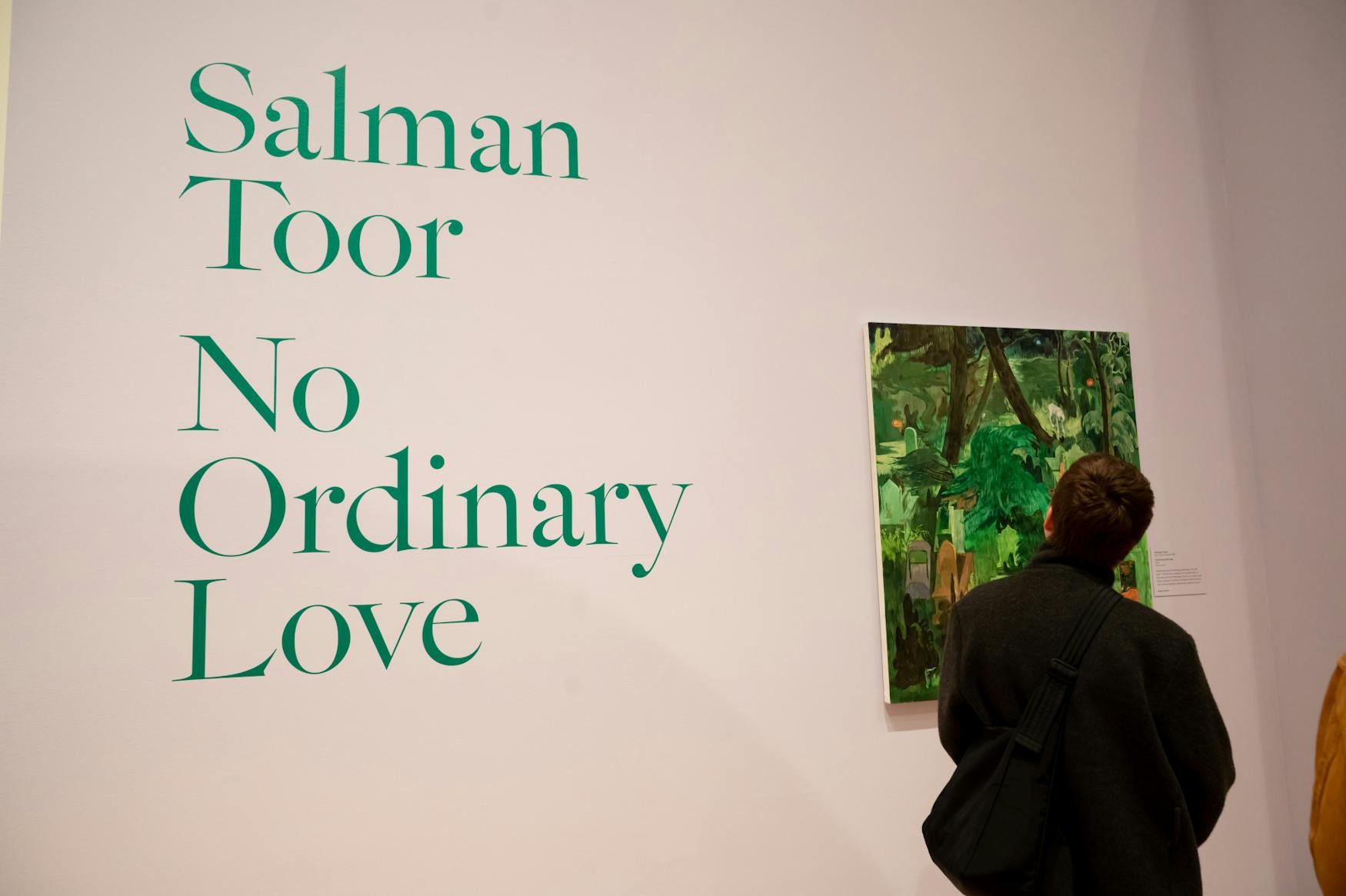No ordinary exhibition at the Rose
Content warning: elements of the exhibition concern and confront difficult and intimate moments of the queer experience. Homophobic slurs are present in this exhibit and article.
On Nov. 16, the Rose Art Museum unveiled the Salman Toor exhibition “No Ordinary Love.” The exhibition carries with it the life and experiences of Pakistani artist Salman Toor, his sexuality, his gender expression, and the complex relationship that culture and personal identity confront. As such this incredibly personal and intimate exhibition was curated with the artist’s personal sentiments and ideas in mind. Dr. Ankori was kind enough to walk me through her favorites and her thought process on opening night.
As I entered the museum on opening night, I was greeted by a staff member who I briefly asked about the exhibition. The staff member, Allison, was very enthusiastic about the exhibit and how it was a departure from the usual work at the Rose. She encouraged me to consider how the work by Toor interacted with the art already at the Rose, considering the Rose’s other current exhibition is “Re: Collection” the reframing of past works in the permanent collection of the Rose. She also emphasizes the accessibility of the museum for all. The Rose is a not-for-profit museum and their hours can be easily found online.
Upon entering the exhibition with Dr. Ankori, I could feel the intensity and the intimacy of the room I entered. Light teal walls guide you gently through the exhibit, changing hues and values to highlight both the pleasant memories of Toor and the unfortunate feelings of loneliness, solitude, and division. Dr. Ankori led me to some of her favorite pieces and curated parts of the exhibition. Walking through the exhibition with her, I asked questions about her thought process, her personal voice, and her thoughts on the themes of the exhibit. Her answers were all incredibly insightful and engaged with the artwork. To give you all some perspective before going for yourself, I will share some of my favorite pieces.
When first entering the exhibition, there is a larger open space — this feels very freeing to explore. On the first wall to the right is a painting called “Back Lawn,” depicting two young boys in an intimate situation, separated away from their families and the larger scene on the front patio. This scene sets up the exhibition well as it frames one of the exhibition’s overarching themes — a separation between queer and heterosexual romances that the artist experienced throughout his life — in an easily seen narrative. This separation is mirrored by Dr. Ankori’s curation which highlights the masculine and feminine forces of identity and expression.
Masculinity and femininity can be identified as themes in three more of Toor’s works. The first two are “Mommy” and “Boy with Neck Chain,” in which you can see the feminine side of the artist. “Mommy” depicts a nude woman in front of a mirror applying makeup, her body’s contours bathed in golden light capturing the viewer. Her beauty does not just capture our attention, but seen in the compact mirror on the armoire, a boy is looking at her and also simultaneously the viewer. “Boy with Neck Chain” shows that same boy, in the same armoire covered and wrapped in warm hues, his body curved like the mother, his femininity was learned and replicated in imitation of her beauty. This is all contrasted by the opposing painting, “The Weightlifter,” which depicts an older man attempting desperately to become the masculine figure of strength. He is alone; his body limp in a mirror looking directly at us, his green room feels more like a prison than a bedroom. He is isolated in his attempt for masculinity; he is alone.
This juxtaposition of masculinity and femininity of queer experience only helps to illustrate the solidarity the artist wants us to consider. As I progressed through the works I felt more of that isolation, specifically in his series of works that include “fag puddles.” “Fag puddles” are Toor’s amalgamations of qualities and garments that seem to pile on one another in these heaps that represent the humanity behind them. There is isolation and solitude in many of these paintings, one seen in “Museum Boys” in which a “fag puddle” is used as a museum exhibit where viewers stare in contempt and interest of the puddle. This calls the viewer into question as a continuation of putting queerness into a box but also as entertainment. The viewer is suddenly complicit in the “spectacle” of queer identity from non-queer spaces. These “fag puddles” are meant to disturb and call into question our view of queerness and the queer identity of people of color.
Toor sought to emphasize the intersection of queer identity and Pakistani culture — a sentiment of intersectionality that the Rose Art Museum wishes to highlight in their current and future exhibitions. Throughout this exhibition, Toor seems to identify the queer voice more than his Pakistani voice. However, much of his influence, his subjects, and his abstraction of figure highlight that which is not explicit. In his work, one can find themselves and many of their loved ones, their faces, their words, and their beauty.
See the Salman Toor Exhibit at The Rose Art Museum now until Feb. 11, 2024. This modern artist is truly a once in a lifetime experience and accessible to all, as the Rose is free to all from 11 a.m. to 5 p.m. Wednesdays through Sundays.



Please note All comments are eligible for publication in The Justice.